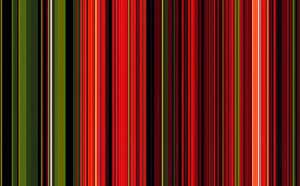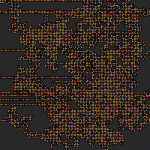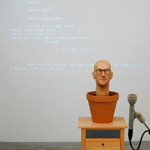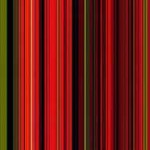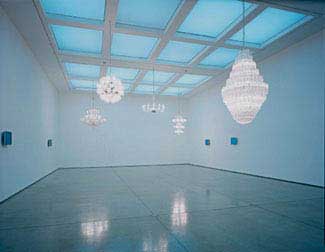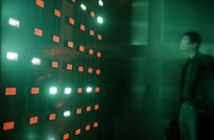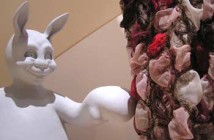Over the next few months, Big RED is proud to present a series of essays by Jouenne and Inman as they develop a language and a history of Synthetic Art.
--
While artists have been using the computer as a tool since the advent of affordable PCs in the 1980s, Synthetic Art proponents, alongside digital or "new media" artists, conceive of technology as a medium in its own right.
However, diverging from Digital Art, which has tended to focus tightly on artistic exploration of specific new media capabilities, Synthetic Art merges computation with established media and techniques. A new generation of classically trained artists addresses the hybridity of 21st century society through a seamless integration of computer programs - designed and coded by the artists themselves - with drawing, painting, sculpture and video. Offering both the distanced consistency of automated analysis/processing and the infinite variation on a theme of recursive algorithms, the computer becomes a full and highly visible collaborator in the artistic dialogue, yet the artist's individual intuition, intellect and skill remain vital to the work.
While still in its infancy, this movement is a significant and vigorous emerging trend in contemporary art. Illustrating the wide range of projects, here are five artists who have shown synthetic work in Boston during the past year.
Ken Feingold's recent "cinematic sculptures" carry on software-controlled conversations that are neither completely scripted nor random, drawing on a library of possibilities to create an ever-changing dialogue. Reese Inman's paintings merge the digital and the handmade, following computer output in paint-by-number fashion; like Feingold's characters, Inman's algorithmic programs possess recognizable identities but generate unique results each time they are run. Also tapping the infinite variation on a theme offered by algorithms, Brian Knep's interactive wall and floor projections react to the viewer's entry or exit, such that each interaction changes the work subtly yet irrevocably. William Betts writes code to sample the personal photos that are his source material and control a painting machine of his own invention, producing stripe paintings which, while completely abstracted, retain their organic origin and essence. Similarly, Jason Salavon's digital prints and videos explore the collection and averaging of large bodies of photographic data, ranging from house for sale images to the content of entire films, positing abstracted and/or composite images as representations of a greater whole.
Exemplifying a synthetic approach to art-making, these artists advance an inherently mediated vision and provisional aesthetic deeply reflective of contemporary experience. Identity is proposed as fluid, destabilized by contingency, or blurred by submersion within a larger context.
Over the next few months, we will use this column enthusiastically extended by Big Red & Shiny to discuss the Synthetic Art proposition with other artists, curators and critics.
Links:
The Synthetic Art Proposition by Karine Jouenne and Reese Inman, Big RED issue #23
Synthetic Art: Genesis by Karine Jouenne and Reese Inman, Big RED issue #24
Synthetic Art: Perspective I by Karine Jouenne and Reese Inman, Big RED issue #25
Synthetic Art: Perspective II by Karine Jouenne and Reese Inman, Big RED issue #26
NAO Gallery
Ken Feingold
Brian Knep - blep.com
Salavon.com
A Conversation With Ken Feingold by Matthew Gamber - Big RED Article, issue #12
Ken Feingold @ SMFA by Matthew Nash, Big RED review issue #10
Seven Questions With Brian Knep by Matthew Nash, Big RED Article Issue #15
The authors are developing an expose on Synthetic Art for publication in early 2006, in conjunction with an exhibition at NAO Gallery.
All images are courtesy of the artists.
- Reese Inman, IsolTangent I, 2005.
- Ken Feingold, Sinking Feeling, 2001.
- William Betts, House of Cards,2004.

